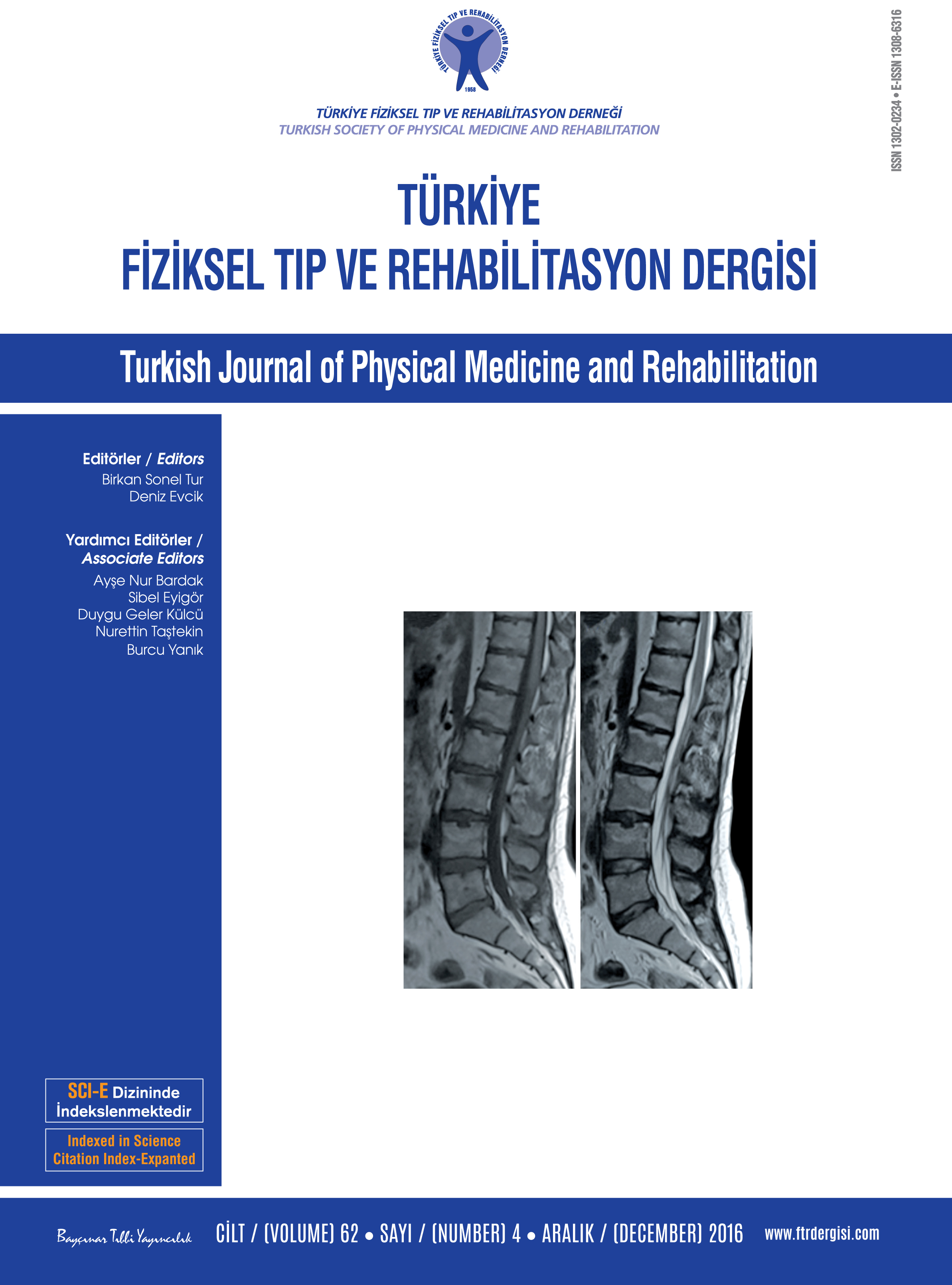Effectiveness of mobilization practices for patients with neck pain due to myofascial pain syndrome: a randomized clinical trial
2 Department of Physical Medicine and Rehabilitation, Physical Therapy and Rehabilitation Unit, Adıyaman University, Adıyaman, Turkey
3 Physical Medicine and Rehabilitation, Adıyaman Training and Research Hospital, Adıyaman, Turkey DOI : 10.5606/tftrd.2016.95777 Objectives: This study aims to investigate the effects of the mobilization applications on neck pain caused by myofascial pain syndrome (MPS).
Patients and methods: Between November 2014 and May 2015, a total of 60 patients diagnosed with MPS at our clinic were included in this study and randomly divided into two groups. Ten sessions of hot pack, therapeutic ultrasound and TENS were performed for group 1 while five additional sessions of (on alternate days) manual therapy (scapular mobilization and Cyriax mobilization) were performed for group 2. Visual analog scale (VAS) was used to evaluate head and neck pain. Results and mean values of local tenderness scores were recorded by using an algometer for six points at each side of the cervical region and trapezius muscles. Furthermore, neck disability scores, endurance of deep cervical flexor muscles and state and trait anxiety scores were recorded. All assessments were performed four times in total: at the beginning of the treatment, at the end of the treatment, in the second week and in the third month after the treatment.
Results: In group 1, decreases in almost none of the VAS scores of head and neck pain were significant in the post-treatment period. Local tenderness scores of neck were significant in the second week and the third month after the treatment. Endurance measurement values were significant in the second week after the treatment. Decrease in the neck disability index scores was found significant at all three measurements of the post-treatment period. In group 2, decreases in head and neck pain scores and neck disability scores were all found significant in the evaluations of the post-treatment period. Similarly, we found significant improvements in almost all of the local tenderness scores of neck and trapezius muscles and endurance measurement values (except for trapezius tenderness measurement in the second week and endurance measurement in the third month). In addition, state anxiety scores in early period were also significant in this group.
Conclusion: This study demonstrated that cervical and scapular mobilization practices have positive effects on pain scores of head, state anxiety levels and neck disability scores (due to improvements in local tenderness, pain scores and endurance of cervical muscles) when added to standard treatment of patients with MPS.
Keywords : Manual therapy; myofascial pain syndrome; neck pain
















